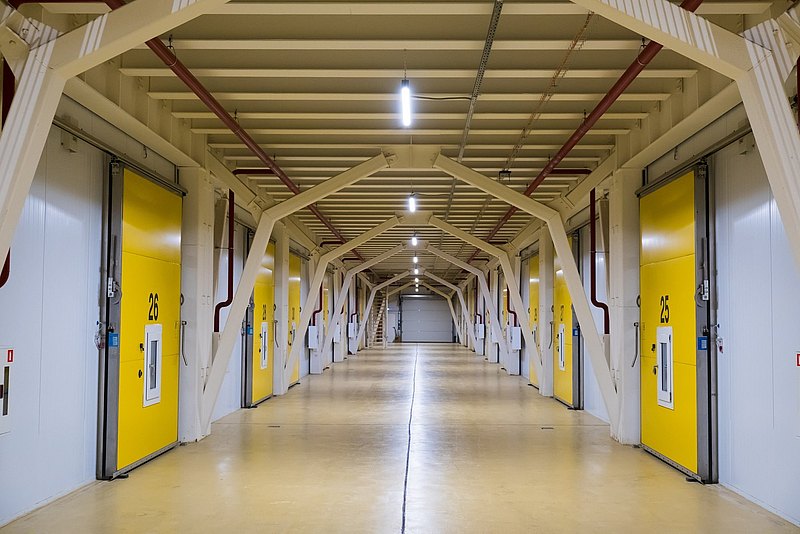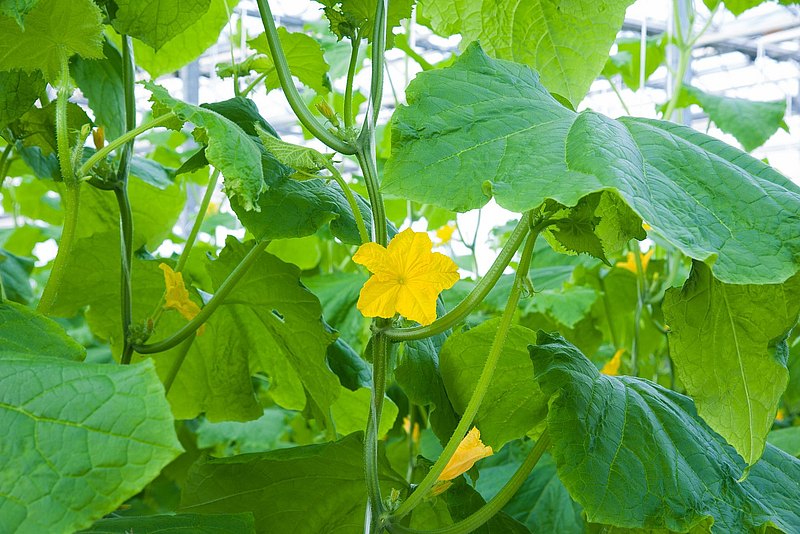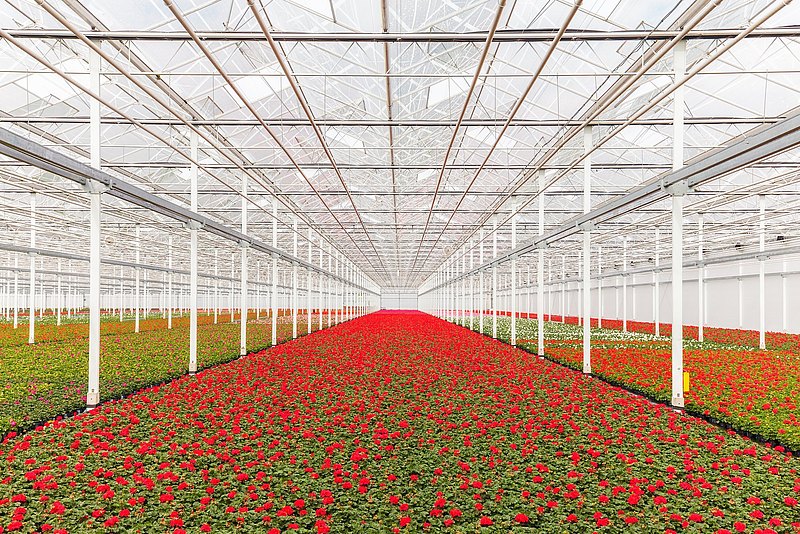Fruit and Vegetable Storage: The Right Atmosphere Matters
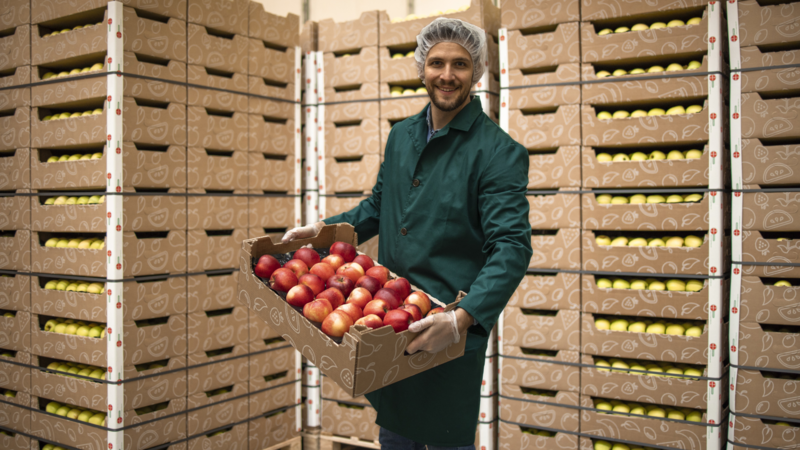
To ensure that seasonal fruits and vegetables can be offered all year round, produce must be stored for several months. Special storage facilities with controlled atmosphere (CA) technology are used for this purpose. Temperature, humidity, and the composition of the surrounding air are precisely monitored and regulated. As a result, various types of fruits and vegetables can be stored up to four times longer than under normal conditions. A key prerequisite is the accurate measurement of temperature, humidity, and CO₂ concentration in CA storage using suitable sensors.
CA Storage – Constant Conditions Increase Storability
Post-harvest storage is a crucial part of the agricultural value chain, following cultivation and harvest. Its purpose is to maintain quality, reduce losses, and, most importantly, ensure the availability of fresh produce over longer periods. Storage under controlled atmosphere (CA) conditions slows down ripening and preserves freshness. To retain consistency, nutrients, colour and flavour for as long as possible, the produce is stored in gas-tight cold rooms at consistently low temperatures and high humidity levels.
The composition of the storage atmosphere also has a significant impact on storability. Normal air consists of around 78% nitrogen, 21% oxygen, and small amounts of carbon dioxide (0.04%).. In CA storage, the oxygen content in the room is lowered to a consistently low level by adding nitrogen, while the CO₂ content is increased. This slows down the natural ripening process and preserves product quality over a longer period of time
What is CA Storage?
Controlled Atmosphere (CA) storage is a specialised post-harvest technique in which the natural composition of the air inside the storage facility is deliberately modified. By lowering the oxygen level, increasing the CO₂ content, and precisely controlling temperature and humidity, the ripening process is slowed down and the metabolic activity of the fruit is reduced. In this way, fruit and vegetables can be stored for significantly longer periods without losing quality, consistency, flavour, or nutritional value.
Atmosphere in CA Storage
The ideal composition of the atmosphere in CA storage depends on the respective fruit or vegetable. Typical storage conditions are:
< 2% O₂
0.5 – 4 °C [32.9 – 39.2 °F]
0 – 5% CO₂
- up to 98% relative humidity (rH)
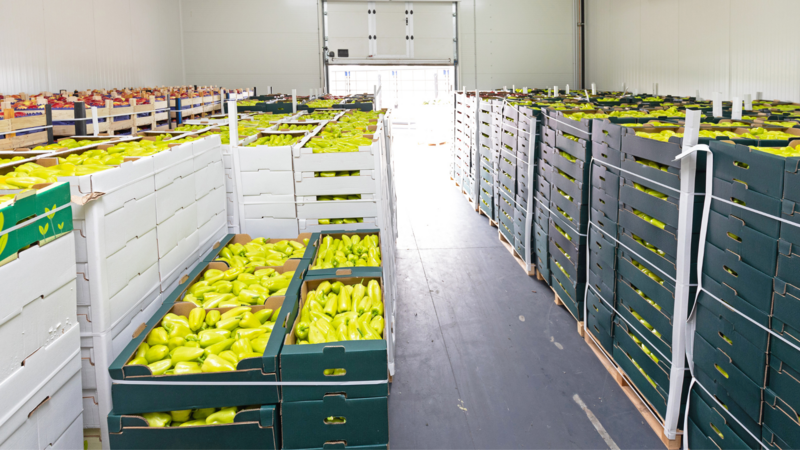
DCA Storage (Dynamic Controlled Atmosphere)
Dynamic Controlled Atmosphere (DCA) storage is an advancement of conventional CA storage. It takes into account the fact that stored fruit continuously releases heat, water, carbon dioxide, and ethylene (C₂H₄) into the surrounding air through cellular respiration, thereby altering the composition of the storage atmosphere.
In DCA storage, oxygen levels as well as ethylene and carbon dioxide concentrations are continuously monitored and dynamically regulated. The aim is to reach an oxygen level as low as possible, just above the anaerobic compensation point (ACP). At this point, CO₂ production is minimal and fermentation is avoided.
In so-called Ultra Low Oxygen (ULO) or Extreme Low Oxygen (XLO) storage facilities, the oxygen level is gradually reduced to around 0.7 – 1%. The stored fruit is effectively put into a kind of "coma", reducing metabolic activity to an absolute minimum. However, fruit-specific O₂ and CO₂ values must not fall below or exceed defined limits, otherwise oxygen deficiency or excessive CO₂ concentration can cause damage.
Fruit-Specific Storage Conditions in CA Storage
| Product | Temperature | relativ humidity (RH) | O2 | CO2 | Normal Conditions | CA Storage | |
|---|---|---|---|---|---|---|---|
| Apple | 0 – 5 °C [32 – 41 °F] | 90 – 95 % | < 4 % | < 0,7 | 3 – 4 months | 9 – 12 months | |
| Pear | -1 – 0 °C [30.2 – 32 °F] | 90 – 95 % | 1 – 3 % | 0 – 1 | 4 months | 12 months | |
| Plum | 0 °C [32 °F] | 95 % | 1 – 2 % | 5 | 18 days | 50 days | |
| Avocado | 7 – 12 °C [44.6 – 53.6 °F] | 90 % | 2 – 3 % | 3 – 10 | 14 days | 2 months | |
| Blueberry | -0.5 – 0 °C [31 – 32 °F] | 90 – 95 % | 2 – 3 % | 10 – 12 | 14 days | 2 months | |
| Cherry | -0.5 – 0 °C [31 – 32 °F] | 95 % | 3 – 10 % | 10 – 12 | 6 days | 25 days | |
| Kiwi | -0.5 – 0 °C [31 – 32 °F] | 90 – 95 % | 1 – 2 % | 4 – 5 | 70 days | 3 – 5 months | |
| Grapes | -1 – 0 °C [30.2 – 32 °F] | 90 – 95 % | 2 – 5 % | 1 – 3 | 1.5 months | 3 – 5 months | |
| Nectarine | -0.5 – 0 °C [31 – 32 °F] | 95 % | 1 – 2 % | 5 | 4 – 5 weeks | 7 weeks | |
| Mango | 8 – 13 °C [46.4 – 55.4 °F] | 90 – 95 % | 3 – 7 % | 5 – 8 | 2 – 4 weeks | 3 – 6 weeks | |
| Peach | 0 – 5 °C [32 – 41 °F] | 90 – 95 % | 1 – 2 % | 3 – 5 | 3 weeks | 40 days |
Overview of fruit-specific storage conditions and storage duration.
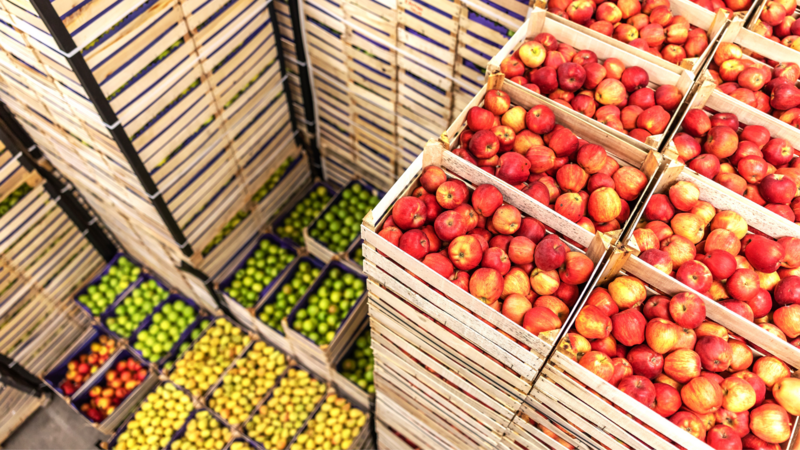
Accurate Sensors as a Prerequisite for Optimal Storage Conditions
To ensure ideal storage conditions, CA/DCA storage facilities are equipped with various technical systems for cooling, climate control, humidification, and gas management (nitrogen generators, carbon dioxide scrubbers, ethylene converters).
A prerequisite for precise control of storage conditions is the continuous monitoring of relevant climate parameters using suitable sensors. Only if measuring devices operate reliably and deliver accurate readings can CA or DCA storage deliver the best results in terms of quality and shelf life.
Humidity, Temperature, and CO₂ Measurement in CA/DCA Storage Facilities
Dust, chemical exposure, high humidity and other extreme environmental conditions can place a heavy burden on equipment. To ensure reliable performance, the following requirements apply to the technology used:
- High measurement accuracy (< 2% RH) and long-term stability under high humidity conditions
- Resistance to contamination and chemical exposure
- Condensation resistance
- Robust housing with protection class IP65 or higher
- Easy maintenance and simple sensor replacement during servicing
E+E Elektronik offers sensors specifically developed for use under such demanding conditions.
Read more about sensor technology for the storage and ripening of agricultural products.
- Go to previous Blog Post: "Growth Turbo" CO₂ - How Does CO₂ Fertilisation Work in the Greenhouse? "Growth Turbo" CO₂ - How Does CO₂ Fertilisation Work in the Greenhouse? previous
- E+E Elektronik at SEPEM Angers: October 7-9, 2025 next Go to next Blog Post: E+E Elektronik at SEPEM Angers: October 7-9, 2025
